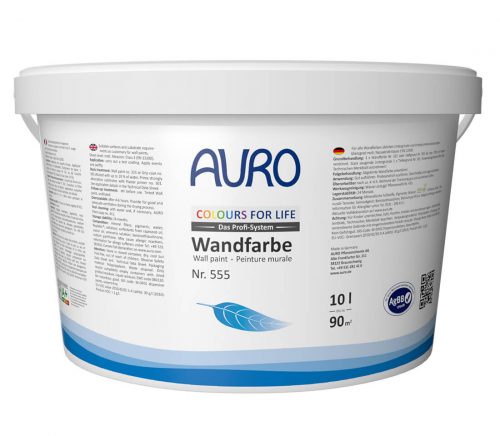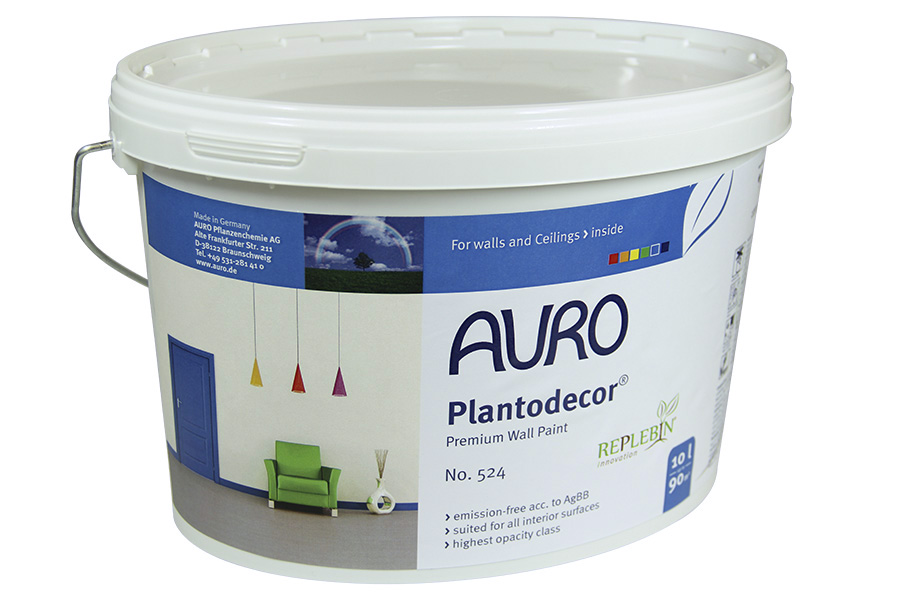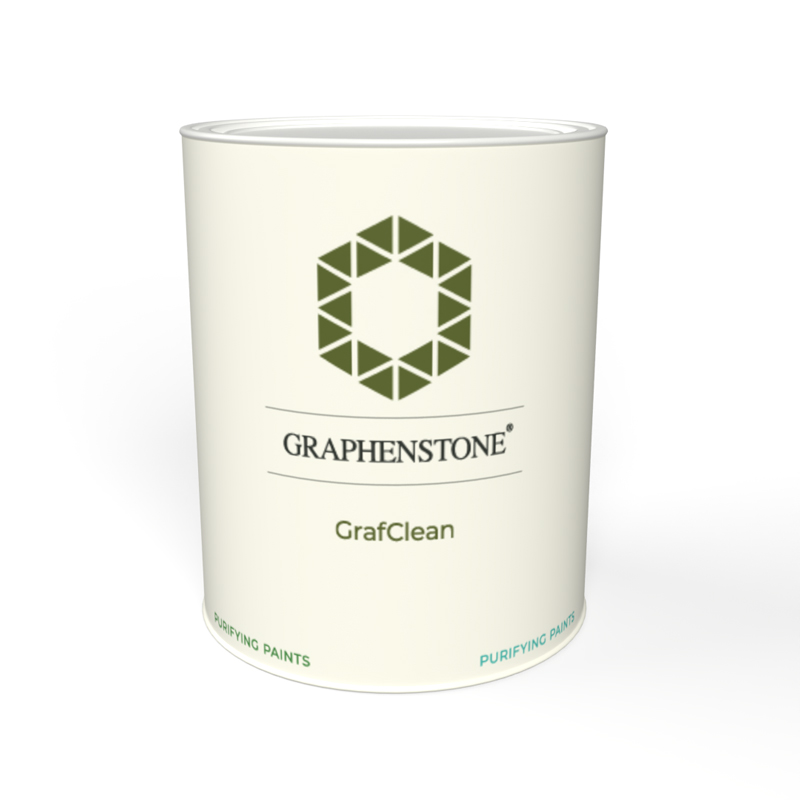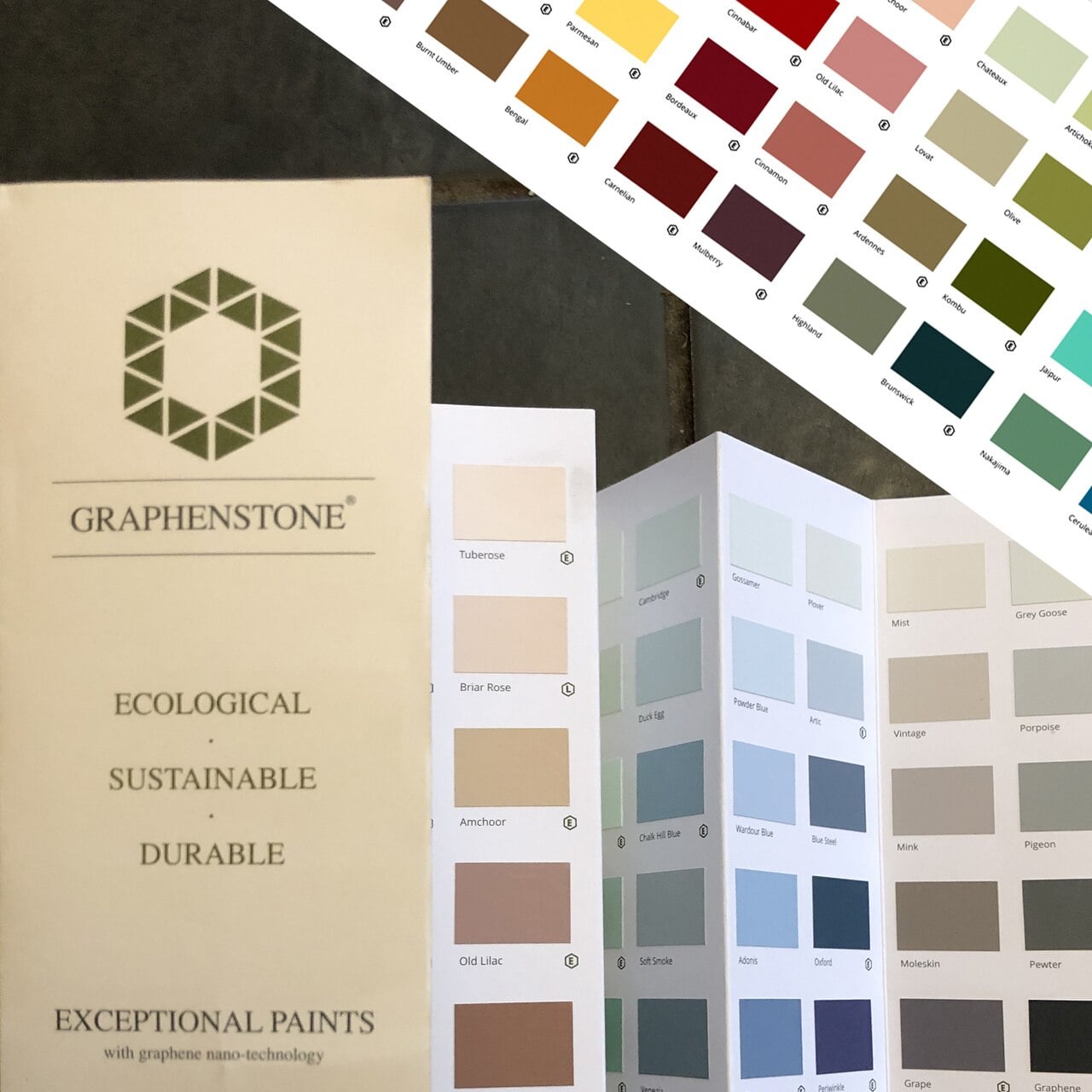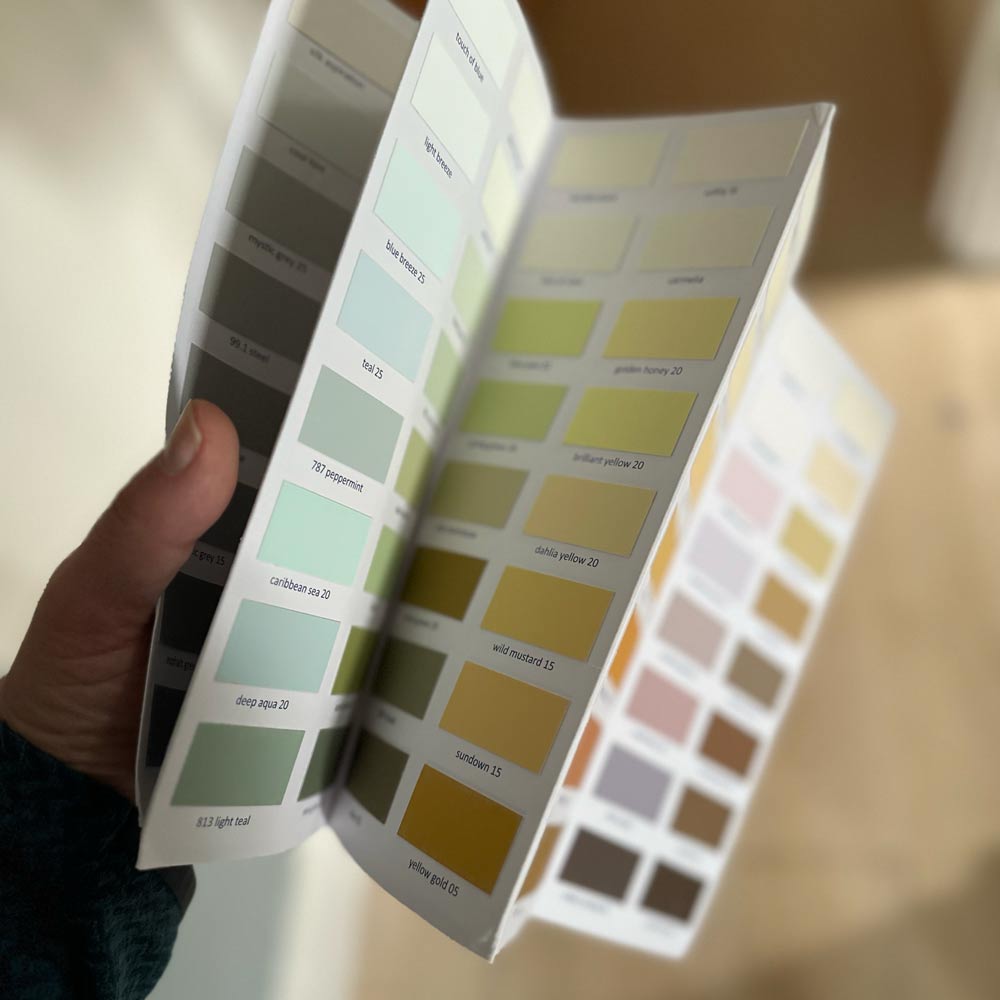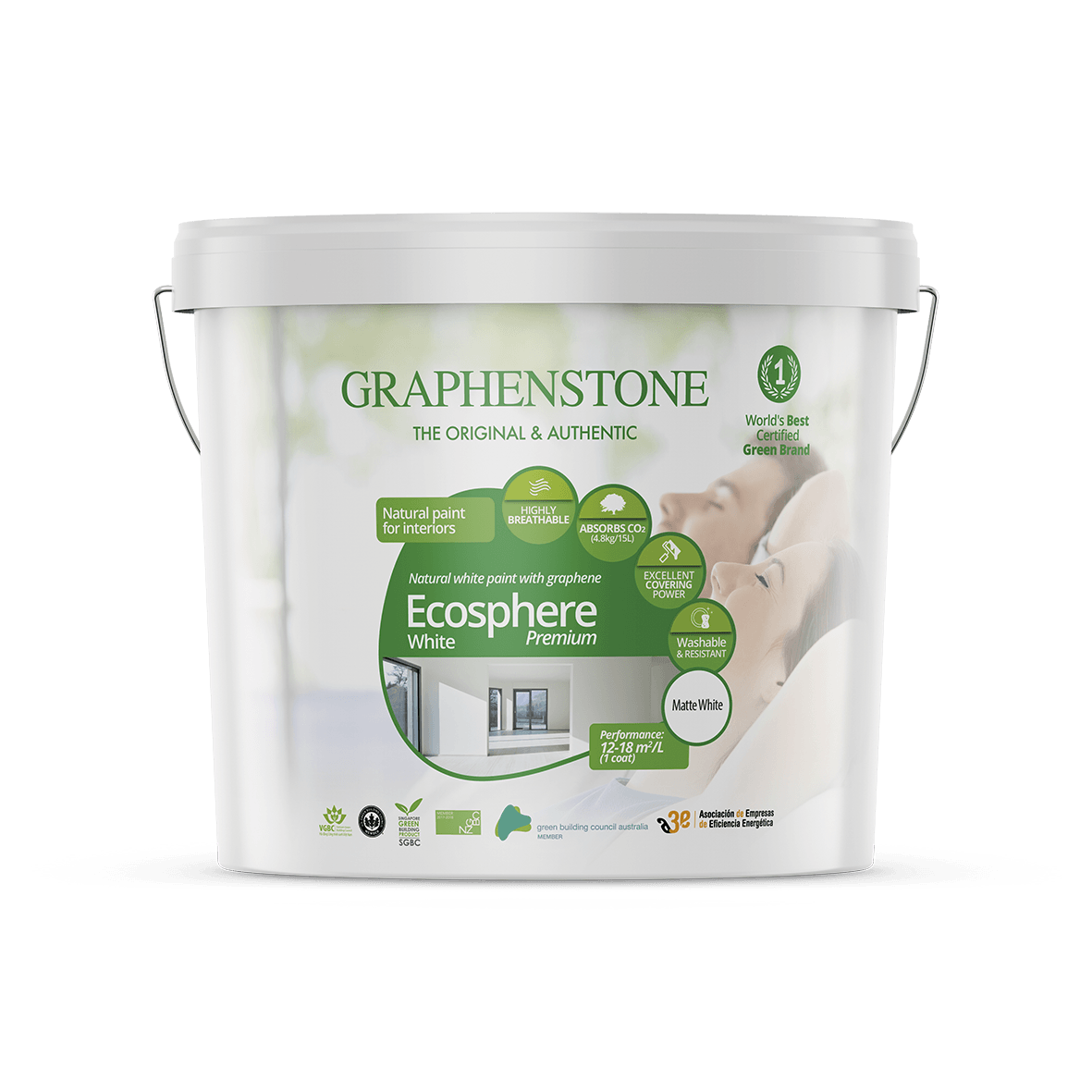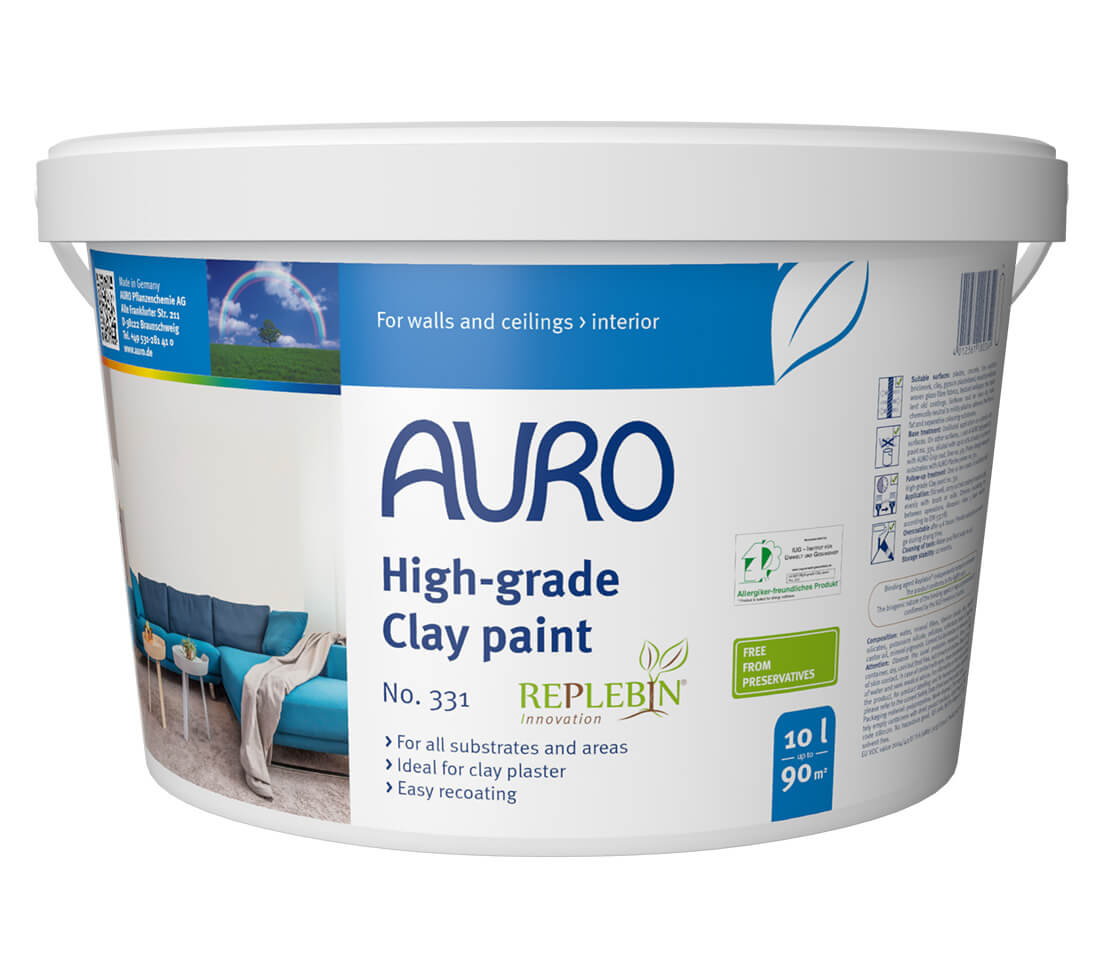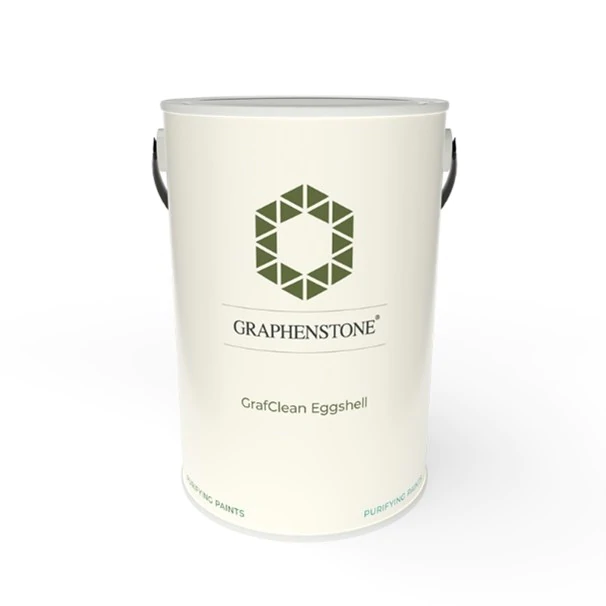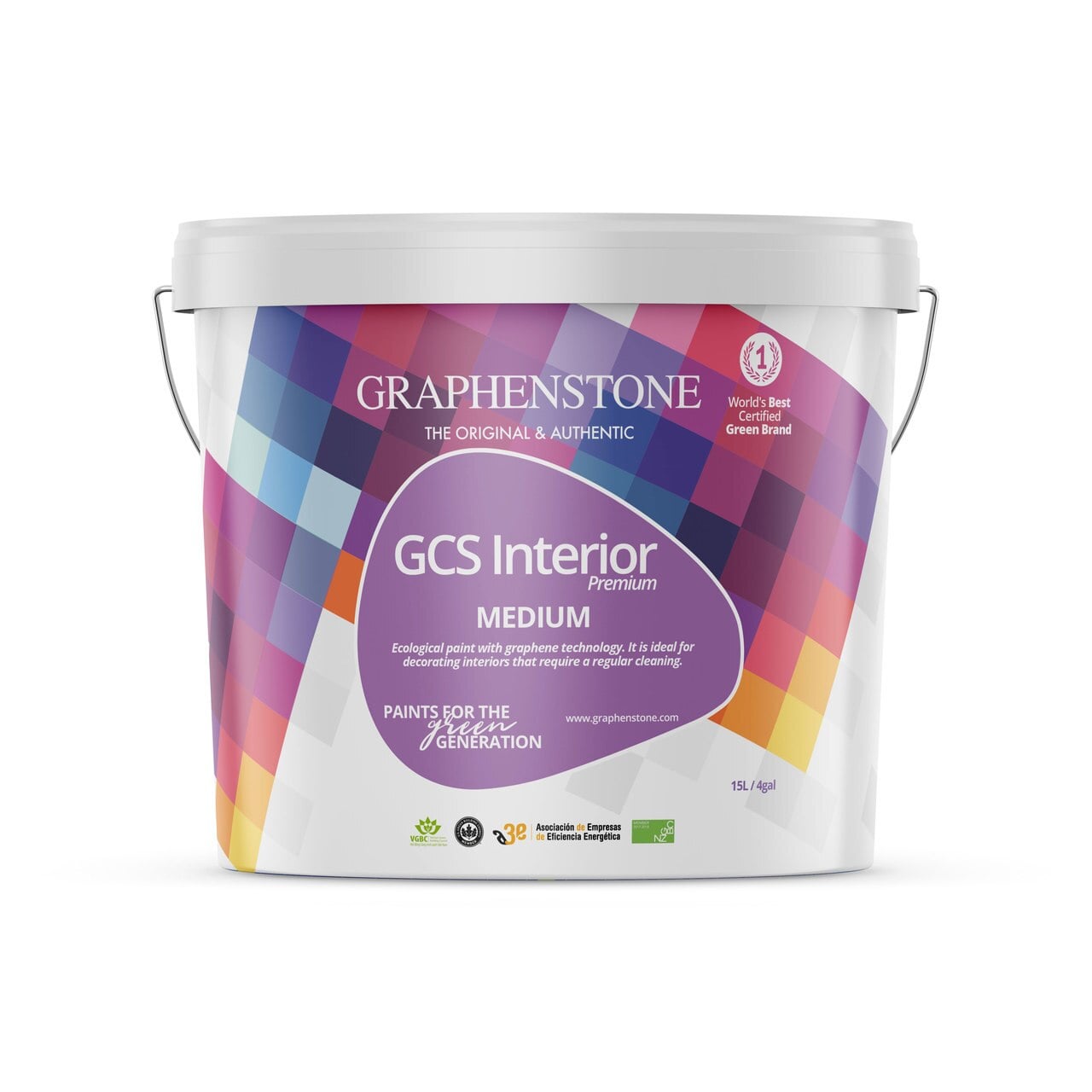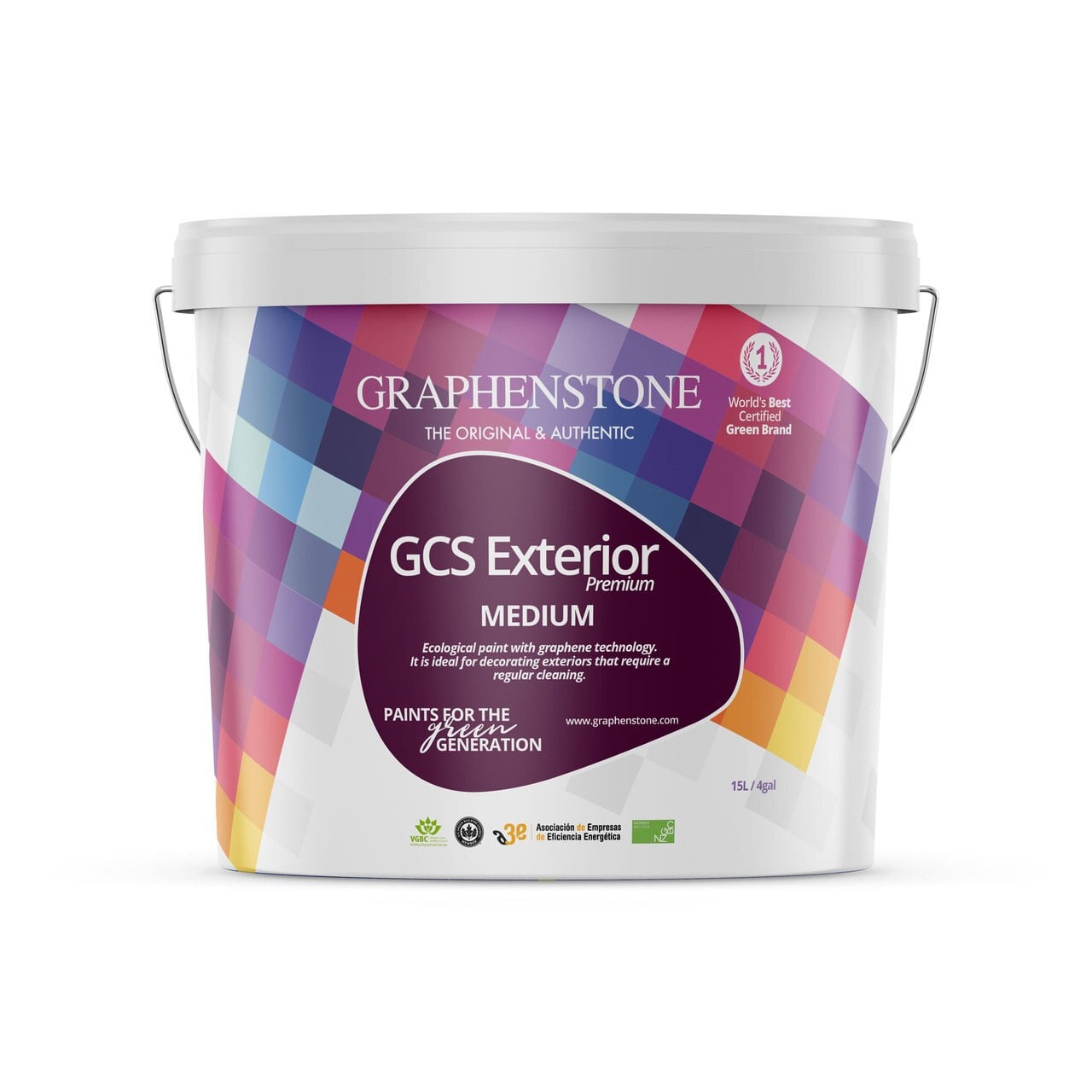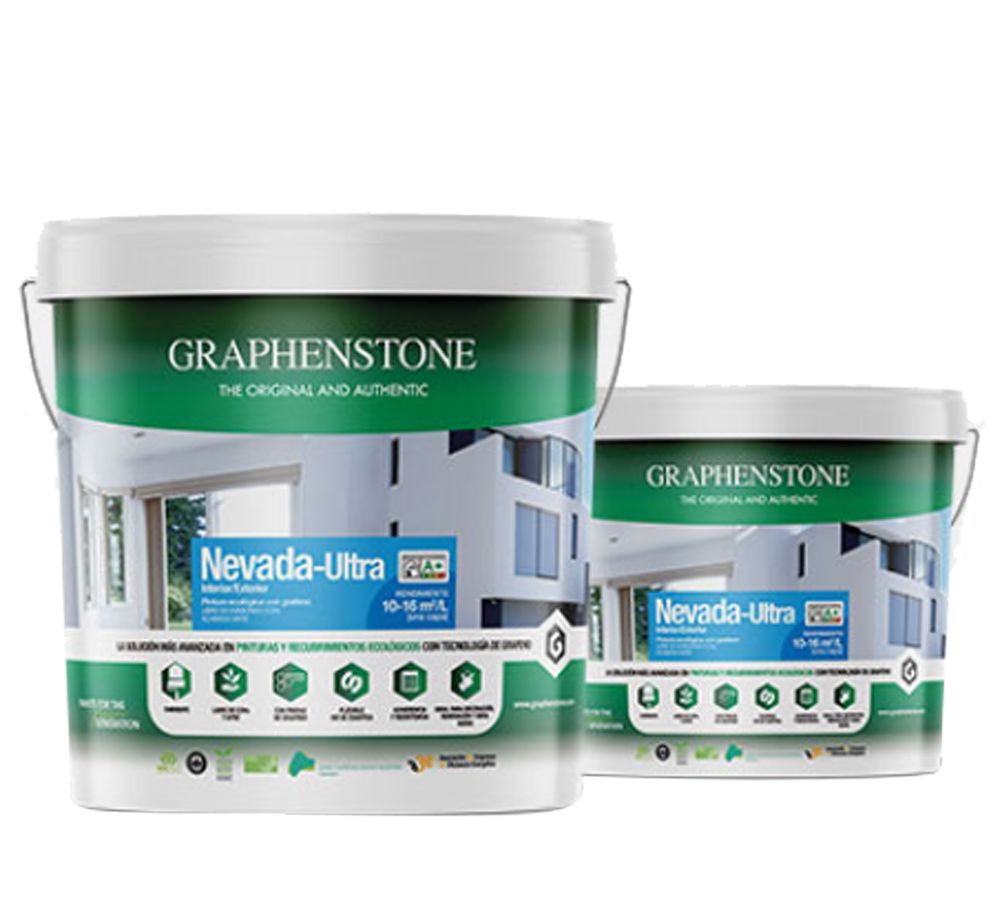Non toxic paint for interior walls and ceilings in a beautiful range of colours. We now have an even better range of non toxic paints for around your home. From white and coloured emulsions for your walls and ceilings, such as Graphenstone Ecosphere (White), or Graphenstone GCS Colour (Colours) – these are a great choice to get you started. If you are interested in why there are chemicals in paint, and why you should avoid conventional paint, please see below the products for further information.
If you are looking for non toxic wood paints for your trim, skirting boards and doors, as well as other wood I would suggest the Grafclean Midshine, a tough satin paint that when used with the natural universal primer is perfect for all kinds of wood. These non toxic paints are easy to apply, tough and hard wearing and strengthened by natural graphene, which stops cracking and peeling and makes for a much better finish! These Graphenstone paints are either VOC free paints, (volatile organic compounds) or minimal VOC, so check the pages to see if they are suitable for your needs. Lime paints are using natural and organic lime bases, which are environmentally friendly and sustainable. Graphenstone is now the most certified green paint brand!
Non Toxic Paints for your home
It is important to use non toxic paint and eco friendly natural paint wherever you can around your house, and also for exterior painting too. We have non toxic paints and low VOC paint for exterior too, such as the Graphenstone GCS Exterior Emulsion paint. We only offer environmentally friendly, sustainable and non toxic paints here, as we are committed to making sure that you use the best possible paints for your interior and exterior house painting projects.
Minimise VOCs and chemicals – Why do paints contain chemicals?We want you to minimise nasty VOCs and chemicals leaching from your paints, which is what off the shelf ‘normal’ big brand traditional paints are doing right now – sometimes this can take years! Formaldehyde is one of the common offenders in conventional paints , and found in almost all standard paint. Why do manufacturers use toxic chemicals in their paint? These ingredients are often cheap. Chemicals are cheap to buy, extend shelf life and also the solvents used to make the paint dry quicker (as these off gas to dry to paint) and also help the paint flow better on the brush (which isn’t a thing anymore anyway, as the paint we stock is super easy to use!) Some of these paints are water based, and some are plant and mineral based.
We just want you to breathe more easily, why pollute your air with VOCs and chemicals when you can just switch to natural and non toxic paints?! If you have any questions about the paint that we offer here please get in contact. We love one of the new grey paint colours in the GCS interior range.
What kind of non toxic paint is available?
This non toxic paint is suitable for kitchens, bedrooms, living rooms, hallways, damp walls, cellars, garages, walls and ceilings as well as having options for interior and exterior wood paint, and options for non toxic furniture paint. We offer next day delivery on all orders as standard.
Why is paint toxic?
Household paint can contain many different types of synthetic chemicals, of which many have links to allergies and even cancers. Standard paint finishes and emulsions release horrible toxic chemicals into the air, and this can resist for many years, usually only releasing half of the VOCs in the first year, crazy. In the first few hours of painting this is by far the worst time, and you have probably experience nausea or headaches, from breathing in the fumes hour after hour.
Does VOC free mean the paint is safe to use?
Please be aware that just because some brands of paint say they are VOC free, this does not mean they are chemical free, nor safe to use! There are lots of added preservatives and extra ingredients that get added in most conventional paint.
Non toxic paint common questions
Does non toxic paint smell?
It really does depend on which brand and type of paint you go for, as some do smell and some don’t. Also, just because some ingredients are natural it doesn’t mean that they don’t smell. For instance the Graphenstone range of paints don’t really smell at all, and are all VOC free, whereas the paint we sold a few years ago was also totally natural but made from linseed oil which did have the smell of linseed!
What is non toxic paint?
Well this is controversial as different companies stretch what I consider ‘non toxic’ to mean. Most companies still peddle horrible chemical filled paint as non toxic because it was less toxic than what they previously offered. The only true way to to find out is to check on the ingredients list, if you can even find one that is. I consider non toxic to be a paint that is made from natural ingredients and not filled with any chemical nasties that could cause health issues and breathing problems. There is literally no reason to use another other than true non toxic paints these days, as people are working out!
Is the smell of paint harmful?
The smell you get from a big brand off the shelf paint are the fumes ‘off gassing’, which is how they dry so quickly. As the horrible chemicals off gas, this smells bad and causes not only headaches but can trigger respiratory problems. Indoor air pollution is finally starting to make the news, and more and more people realise that this is a very toxic environment that can easily be avoided by using true natural paints.
Where to buy non toxic paint?
We have a great range of non toxic paints both for interior walls and ceilings, but also for wood work and trim. Safe, zero VOC, natural and breathable.
Do you have non toxic paint for wood? Yes we do, check out the natural wood paints, and don’t forget to use the natural primer for best adhesion!
Do you have a non toxic paint for crib? Yes – I would advise the Graphenstone natural wood paint here.
Do you have non toxic paint for walls? The toughest non toxic paint for walls we offer would be the Grafclean Premium. That’s what we use!
Do you have non toxic paint for wooden toys? I would advise using this natural wood paint here – not forgetting the natural primer first.
Do you have non toxic voc free paint? Yes we have a great range of non toxic voc free paints, perhaps have a look at the range above and find something suitable for your home.
Non toxic paint for wood: I would suggest our natural wood paint, the Graphenstone Midshine.
Why Non Toxic Paints
Over the last few decades, there has been a notable shift in the paint industry – one that has been accompanied by increased demand for safe, sustainable, and eco-friendly products. In line with this trend, a lot of companies have focused their efforts on creating paint products that are more environment-friendly and minimally toxic to human health.
One of the major concerns people have had with the normal and commonly found paint is its level of toxicity. Over the past few years, science has proven how injurious the exposure to certain chemical compounds in the paint like VOCs and titanium dioxide are to human health, which has influenced the manufacturer of natural and safer paints. In this article, we will discuss an alternative to synthetic, petrochemical paints: non-toxic paints.
What Makes a Paint Non-Toxic?
For paint to be non-toxic, it must be free of certain chemical compounds or contain low concentrations of them. Some of the harmful components that your paint should be free from are:
-
Alkylphenol Ethoxylates
Alkylphenol Ethoxylates (APEs) are chemical compounds that are mainly found in acrylic paints. APEs are non-biodegradable and have a range of harmful effects on human health. Most notably, these can enter the body and disrupt the biological processes involved in the production of hormones, causing an alarming imbalance. Because of this, they may cause a range of reproductive diseases and complications in childbirth. ALEs function as surfactants in the paint. They stabilise the paint and enhance its binding ability during the drying process.
-
Antimicrobial Agents
Antimicrobial agents are also widely present in paint formulations, particularly water-based paints. The growth of bacteria inside paints can ruin the quality of the paint, which is why antimicrobial agents are added. These agents prevent the growth of bacteria in the paint containers but can cause illness in humans on exposure. Not only may they promote antimicrobial resistance in the population, but can also give rise to developmental and health issues in humans and animals.
-
Volatile Organic Compounds (VOC)
Petrochemical house paints contain Volatile Organic Compounds (VOCs), which is a great hazard to human health. VOCs are organic compounds that are emitted in gaseous form from the surfaces of certain solids and liquids. What allows them to be released in this manner is their low boiling points which in turn permits them to evaporate and sublimate into the surrounding environment at room temperature. What makes volatile organic compounds a point of this discussion here is that these compounds are severely toxic to humans depending on their concentration in the atmosphere and the period of exposure. Chemicals that classify as VOCs include toluene, xylene, acetone, formaldehyde, benzene. While choosing your paint, make sure you check the label for low-base VOCs or a VOC-free characteristic.
-
Colourant VOC
Another thing that you should be mindful of while gauging the toxicity of the paint is the richness of the colour. Higher concentrations of VOCs in paint are associated with stronger colours, so by doing something as simple as choosing lighter shades can ensure a lower quantity of VOCs in your paint. You can also check the label for the level of colourant VOCs constituting it.
-
Metals
Metals are freely added into paint formulations owing to the simple fact that they increase paint performance. Metals like cobalt, cerium, calcium, manganese, and zirconium facilitate the drying phases of painting. The reason your paint should be free of these is that metals are associated with a range of health problems that include allergies, heart complications, and lung diseases. Even in small quantities, these can cause harmful levels of toxicity in humans.
Benefits of Non-Toxic Paint
Non-Toxic paints and finishes that are low in VOC content or VOC-free are in an increased demand now, not only because they are safer and more environmental-friendly, but recent advancements in technology have also allowed for these non-toxic paint products to be more durable, cost-effective and produced in a wider variety of colours. Some of the benefits of non-toxic paints are as follows:
- Water-based paints are readily washable and long-lasting. Stains can readily come off without significant damage to the original coat.
- Non-toxic paints do not give off strong and unpleasant odours during the phases of painting. The fumes that give that characteristic paint smell are harmful, so the stronger the smell, the higher the level of toxicity of the paint.
- In the manufacture of synthetic paints, large quantities of hazardous waste are produced. A great benefit of non-toxic naturally produced paints is that this waste is greatly reduced.
- A low-VOC content in paints makes way for reduced landfill and a reduced carbon footprint, which makes these paints very environment-friendly.
- Most importantly, non-toxic paint is not hazardous to human health and a safe, healthy alternative to petrochemical paints.
What Are Your Options With Non-Toxic Paint
Taking into consideration the concerns of the consumer regarding the toxic nature of synthetic paints, manufactures have started expanding their options in non-toxic paint with an accompanying variety of finishes, sheens, varnishes, and primers. Underneath the umbrella of non-toxic paint, you would find natural paints to hold a high place.
No toxic Natural Paints
These paints are synthesised from natural ingredients and through a natural, environment-friendly process that involves minimal carbon emissions. A great thing about these paints is that they do not contain VOCs and toxic levels of chemicals. Because of this, they do not give off strong, unpleasant odours that can cause a general feeling of illness in painters, decorators, and occupants of the building. You would find yourself breathing comfortably and walking room to room to inspect your house during the renovation process without feeling sick and being exposed to toxic fumes if you end up selecting natural paints. Some of the ingredients that constitute natural paints include water, chalk, clay, casein, natural latex, beeswax, etc.
Graphenstone Paint
In natural paints, one of the best options you have is Graphenstone paint. If this is the first time you’re hearing of this, then you are in for a pleasant surprise. Graphenstone paint is a mineral-based paint that is formulated from natural ingredients utilises graphene technology to create a paint that works well on both exterior and interior walls. In addition to walls, it works great on a range of surfaces like brick, wood, tiles, plaster, metal, and more.
The natural and organic nature of this paint makes it non-toxic, with a low-VOC content. It has great stability, comparably shorter drying phase, and good resistance to weathering and moisture which makes it durable.


